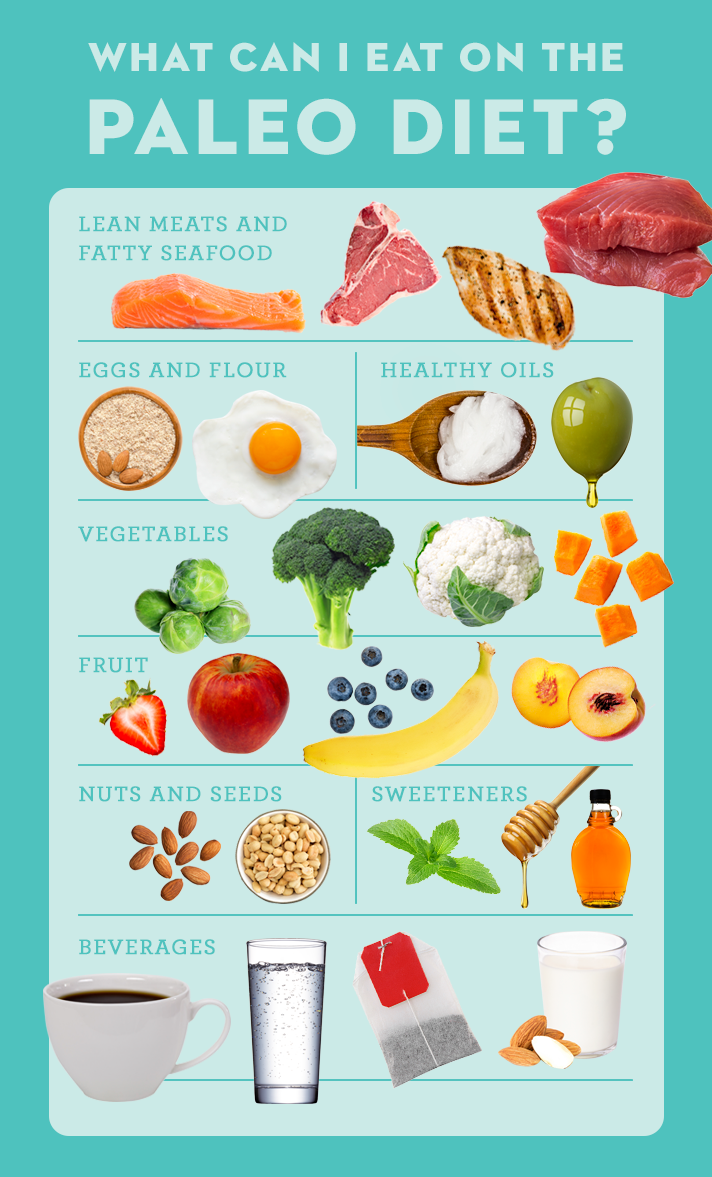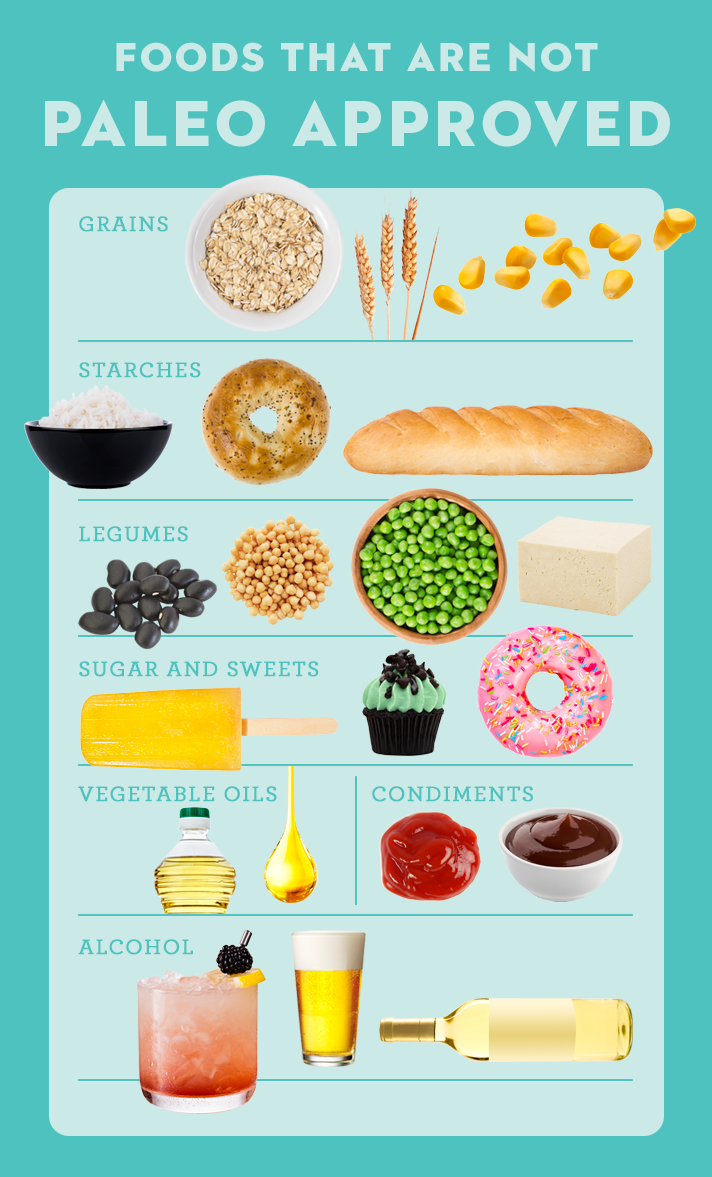Your Ultimate Paleo Diet Shopping List

While the paleo diet is a program that's surged in popularity among those trying to jumpstart weight loss, it remains more obscure than other targeted diets around it — like the keto diet or the more challenging Whole30. Our guide to the ultimate shopping list of paleo-friendly groceries will help you plan your next trip to the store. If it's your first time attempting a paleo diet, we're recapping everything you need to know before you begin.
The paleo diet encourages a heavier focus on proteins and a pivot away from sugars, but does ask dieters to cut back on, or cut out entirely, some food groups. Paleo diets are based on higher protein consumption with less emphasis on dairy items, starchy carbs, as well as sugar in order to promote weight loss. They've become known as the "caveman" diet in health circles, as the diet promotes as many whole, unprocessed foods as possible; proponents say these "clean" foods can increase your energy, kickstart your metabolism (and thus, weight loss), as well as lower inflammation naturally.
“The paleo diet is meant to include foods our hunter-gatherer ancestors ate that do not require any technology to produce. The idea is to help prevent disease, reduce inflammation, lose weight and increase energy from whole foods like fruit, veggies, proteins and healthy fats while eliminating processed food, added salt and sugar,” explains Lauren Harris-Pincus, M.S., R.D., and author of The Protein-Packed Breakfast Club. “One clear benefit of paleo is focusing on more whole foods while eliminating processed junk.”
You'll have to avoid entire food groups, though. “It exempts whole food groups like grains, dairy and legumes, which can lead to some nutrient gaps,” she tells Good Housekeeping. So, if you are planning on going Paleo, supplement or choose food pairings wisely, and make sure you eat enough calories, too. “Eliminating whole grains and beans may make it more difficult to achieve fiber goals, as figures suggest 9 out of 10 Americans fail to do anyway,” she says. So, eat more fruit and veggies (and other fiber-packed snacks!) to get those fiber grams in.
Fiber isn't the only concern when it comes to nutrients and paleo diets. “It's also important to make sure you get enough calcium when avoiding dairy. It's tough to meet minimum daily requirements without fortified foods, so unsweetened nut milk may be needed,” she says. Check labels as many organic products are not fortified with calcium, and if you're already turning to supplements to meet nutrient standards, you may wish to add calcium, too. You can also double down on staples like fish and non-starchy, green veggies, like broccoli or Brussels sprouts.
Lastly, there's more room for sweets on a paleo plan as compared to a keto plan — but don't load up on paleo-approved sweets too often. "It makes no sense, nutritionally, that refined sugars are forbidden but things like agave, honey, maple syrup and coconut sugar are allowed. In your body, sugar is sugar," Harris-Pincus explains. Treat those items like you would sugar elsewhere, and eat the raw, whole foods for the majority of meals and snacks instead.
What You Can Eat on a Paleo Diet:
There are plenty of dietary substitutes that you can use to your advantage on this list, like almond flour in place of regular flour, and grass-fed butter over margarine or other fats. Before you start your paleo diet, here's a handy guide on what you can eat:

Fresh lean meats: Particularly grass-fed cuts of meat and wild game, including, but not limited to: chicken, beef, pork, turkey.
Fatty seafood: Especially those rich in omega-3 fatty acids, such as salmon, mackerel and albacore tuna (preferably wild caught).
Shellfish: Crab, clams, oysters, lobster, mussels.
Flour: Almond, coconut and cassava flour.
Eggs: Cage-free or organic preferable.
Most fats and oils: From fruit and nuts like olive, walnut, flaxseed, macadamia, avocado, coconut, avocados. Grass-fed butter is allowed on some plans.
A large selection of non-starchy vegetables: Cauliflower, broccoli, Brussels sprouts, butternut squash, cabbage, and spinach. Some allow sweet potatoes on the diet.
Most nuts and seeds: Almonds, cashews, pistachios, walnuts, macadamia nuts, pecans, hazelnuts, pine nuts, Brazil nuts, pumpkin seeds (pepitas), chia seeds, sunflower seeds, and flax seeds. Nut butters are included in this category, but be sure to pick natural varieties that aren't sweetened.
Fruit: Apples, berries, including blackberries, blueberries and strawberries, melon, grapes, bananas, citrus fruits, peaches, and plums.
Some of your favorite beverages: Tea, sparkling water, coconut milk, almond milk. On some plans, decaf coffee is allowed.
All spices and some sweeteners: Honey, maple syrup, agave nectar, coconut sugar and "natural" non-nutritive sweeteners like stevia and erythritol.
What You Can't Eat on the Paleo Diet:
This list is pretty extensive, and you'll have to say goodbye to a few food groups that you may regularly eat every day. All breads, sweet treats, alcohol, and our favorite sauces are getting the axe. So are delicious vegetables within something known as the "nightshade" group (a.k.a some veggies that prefer to grow in shade), a controversial decision that some health experts blast as overwrought, at best.

Most grains: Grains and cereals made from wheat, rye, oats, corn and barley.
Starches: Bread, bagels, cereal, pasta, rice, corn, oatmeal, crackers, pizza, popcorn, granola, muesli, flour, and potatoes.
Nightshade veggies (for some plans): Potatoes, tomatoes, eggplant, and sweet and hot peppers.
Legumes: Black beans, kidney beans, pinto beans, navy beans, soybeans, peas, chickpeas, lentils, tofu.
Refined and artificial sweeteners: Cane sugar, aspartame, sucralose, cyclamates, saccharin, acesulfame potassium, and nearly all forms of carbonated soda.
Sweet treats: You can't have dessert, unless it's been made with unrefined sweeteners and acceptable ingredients.
A selection of vegetable oils: Soybean oil, sunflower oil, cottonseed oil, corn oil, grapeseed oil, and safflower oil.
Alcohol: Beer, sweet wines, and sweetened alcoholic drinks. Some paleo plans allow gluten-free hard cider and red wine, but not all.
Bottled condiments: Ketchup, BBQ sauce, tomato sauce, and some salad dressings and hot sauces that contain added sugar.
Before you start your diet, have a chat with your doctor about how a paleo diet program may impact your health, even if weight loss is your goal. Paleo plans may cause people to skip out on healthy food groups (legumes and vegetables included!) and miss out on appropriate calorie intakes, Harris-Pincus says, so planning to eat enough during meals and at snack time is crucial.
You Might Also Like


